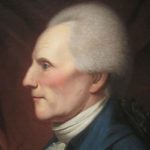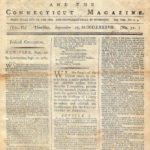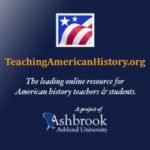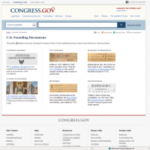Students who listen to this Grade 2 Core Knowledge History and Geography unit discover that Americans had a difficult task at hand after winning the Revolutionary War: they had to figure out a better way to govern themselves. Such leaders as James Madison, George Washington, Alexander Hamilton, and Benjamin Franklin traveled to Philadelphia to meet at the Constitutional Convention, with the goal of creating a new government. Students learn that the talks were held in secret in Independence Hall and that American leaders argued about many issues until they agreed to approve a new Constitution. They then hear that James Madison (whom we call the Father of the Constitution), along with John Jay and Alexander Hamilton, wrote the Federalist Papers to explain the document’s merits and to persuade the states to vote for it. Students find out that the states did finally approve the Constitution; that Madison wrote a Bill of Rights that was added to it; that the Constitution gives the American people the right to decide what the laws should be for our country; and that we can still amend it today.(5 lessons)
Founding Documents
Discover the documents at the bedrock of our nation’s founding and understand the fundamental ideas from each of the documents, and the major principles of the U.S. Constitution. Primary sources include the Declaration of Independence, Articles of the Confederation, the Constitution and the Bill of Rights, Federalist papers (#51, #70, #78), Brutus #1, and the amazing Letter from the Birmingham City Jail. Check out the National Constitution Center’s learning module for more resources!
Founding Documents: Federalist and Anti-Federalist Papers Podcast
Ten days after the Constitution was signed at the Old Philadelphia State House, an anonymous op-ed appeared in the New York Journal. Signed by “”Cato,” it cautioned readers of the new Constitution to take it with a grain of salt. Even the wisest of men, it warned, can make mistakes. This launched a public debate that would last months, pitting pro-Constitution Federalists against Constitution-wary Anti-Federalists. It was a battle for ratification, and it resulted in a glimpse into the minds of our Framers – and a concession that would come to define American identity.
Our guides through the minds of the Federalists and Anti-Federalists are Claire Griffin and Cheryl Cook-Kallio.
This short episode includes a one-page Graphic Organizer for students to take notes on while listening, as well as discussion questions on the back side.
Federalist No. 10
Alexander Hamilton Primary Source Documents
Alexander Hamilton, the subject of Lin-Manuel Miranda’s eponymous Broadway show, influenced the drafting the United States Constitution, ensured its ratification, and helped to save the fledgling nation from financial ruin. Learn more about Hamilton’s role at the Constitutional Convention, New York Ratifying Convention, and in drafting the famous Federalist Papers by exploring historical documents in the ConSource digital library.
Lesson 1: Anti-federalist Arguments Against “A Complete Consolidation”

This lesson focuses on the chief objections of the Anti-federalists, especially The Federal Farmer (Richard Henry Lee), Centinel, and Brutus, regarding the extended republic. Students will become familiar with the larger issues surrounding this debate, including the nature of the American Union, the difficulties of uniting such a vast territory with a diverse multitude of regional interests, and the challenges of maintaining a free republic as the American people moved toward becoming a nation.
The Constitutional Convention
In this lesson, students will use C-SPAN video clips to examine the founding principles that emerged from the Constitutional Convention as well as hear about some of the people who participated. Students will use this information to analyze the role the compromise played in the creation of the Constitution.
James Madison and the Constitution
In his essay “James Madison and the Constitution,” Professor Jack Rakove probes the mind of James Madison — the delegate known as the “architect of the Constitution,” explores the weaknesses of the Articles government, and develops arguments for a stronger union in a memorandum entitled Vices of the Political System of the United States. Free registration for students and teachers required to access resource.
United States Founding Documents
The Printers’ Role in Constitutional Ratification

This short video examines the role played by America’s newspaper printers in the ratification debates. Over 80% of all papers supported the new Constitution and played a significant role in supporting the Federalist cause. Professor John Kaminski explains how and why the newspapers helped to drive the ratification debates.

